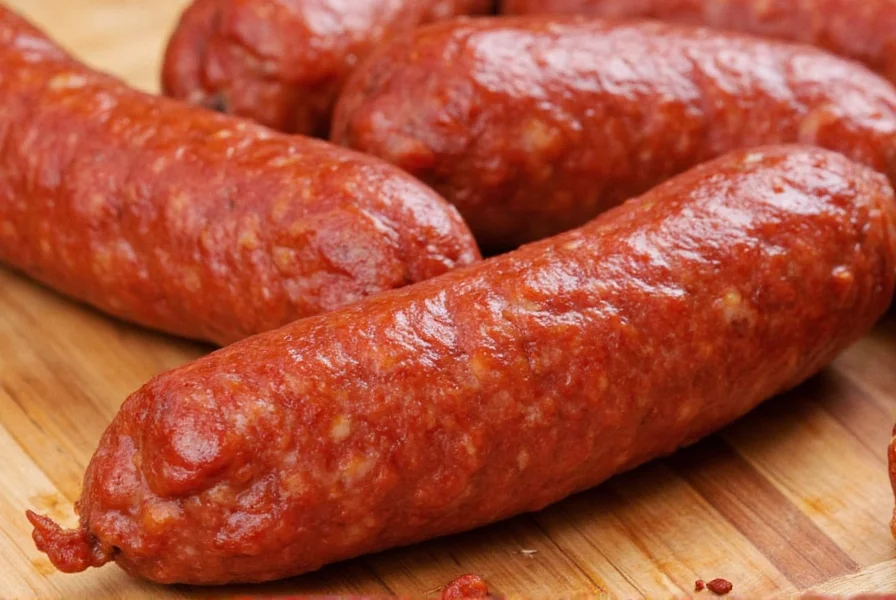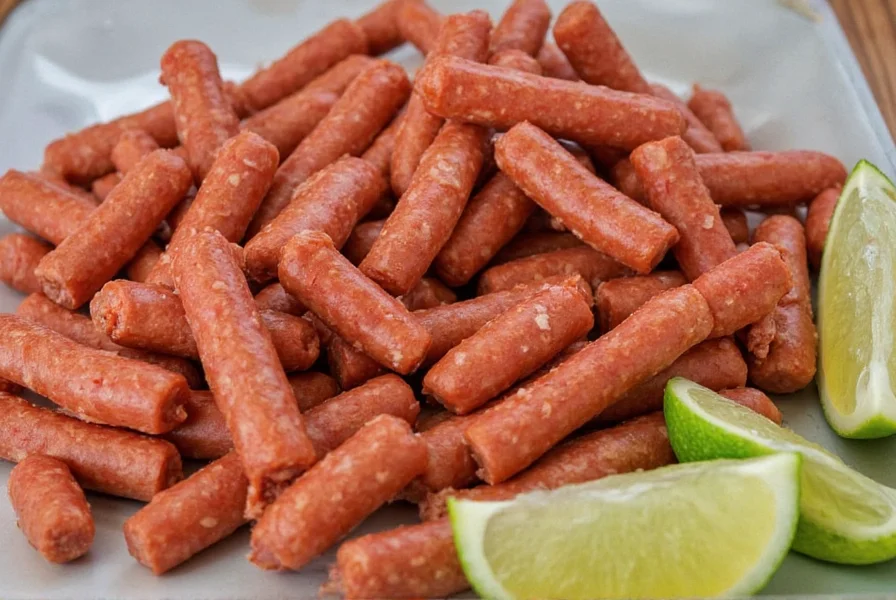Spice Up Your Life: A Sizzling Guide to Making Mexican Chorizo at Home!
If you’ve ever taken a bite of freshly grilled tacos al pastor or sizzled up some homemade chorizo for breakfast, you know there’s something magical about the bold flavors and vibrant aroma of Mexican chorizo. But did you know you can bring that authentic taste into your own kitchen? Whether you're a seasoned home cook or just starting to explore global spice traditions, this guide will walk you through everything you need to know to make Mexican chorizo like a pro — with a few spicy secrets along the way.
Table of Contents
- What Makes Mexican Chorizo Special?
- Essential Ingredients for Authentic Chorizo
- Tools You Need in Your Spice Arsenal
- Step-by-Step Guide to Make Mexican Chorizo
- Pro Tips to Level Up Your Chorizo Game
- Buying Guide: Choosing the Best Ingredients
- How to Serve & Store Homemade Chorizo
- Final Thoughts
What Makes Mexican Chorizo Special?
Mexican chorizo isn’t just another sausage — it’s a flavor bomb made from coarsely ground pork, a fiery blend of spices, and a touch of vinegar or wine to help preserve it and add tang. Unlike Spanish chorizo (which is cured), Mexican chorizo is fresh and needs to be cooked before eating.
The secret lies in the spice mix, particularly the use of dried chilies like guajillo and ancho, which are soaked and blended into a rich paste. When combined with garlic, oregano, coriander, and vinegar, they create a deep, earthy, and slightly smoky flavor profile that defines Mexican chorizo.
Essential Ingredients for Authentic Chorizo
To truly make Mexican chorizo shine, you’ll need to get the balance right between fat content, meat texture, and spices. Here's what you should have in your pantry:
| Ingredient | Purpose |
|---|---|
| Pork Shoulder (with fat) | Provides the right ratio of meat to fat for juiciness and texture |
| Dried Guajillo Peppers | Delivers bright, fruity heat — key to authentic color and flavor |
| Dried Ancho Peppers | Adds sweetness and depth |
| Vinegar or Red Wine | Preserves and enhances spice penetration |
| Garlic | Brings sharpness and pungency |
| Smoked Paprika | Enhances the smoky character |
| Oregano (Mexican preferred) | Lends an herbal backbone |
| Coriander Seeds | Offers citrusy warmth |
| Salt | Seasoning and curing agent |
Tools You Need in Your Spice Arsenal

You don’t need fancy equipment to make Mexican chorizo — but having the right tools makes the process smoother and more enjoyable. Here’s a list of essentials:
- Cast Iron Skillet or Dutch Oven: For toasting and rehydrating dried chilies
- Blender or Food Processor: To puree the chilies and spices into a smooth marinade
- Meat Grinder: Optional but ideal for achieving that classic chorizo texture
- Stand Mixer with Meat Hook Attachment: Helps evenly incorporate spices into the meat
- Ziplock Bags or Glass Jars: For marinating the meat
- Butcher Twine or Sausage Casings (optional): If you want to stuff and shape your chorizo
Step-by-Step Guide to Make Mexican Chorizo
Ready to dive into the world of spice alchemy? Follow this step-by-step guide to make Mexican chorizo that will knock your socks off.
Step 1: Toast and Rehydrate the Chilies
Heat a dry skillet over medium heat. Add the guajillo and ancho peppers, pressing them flat with a spatula. Toast for about 30 seconds per side until fragrant and pliable. Be careful not to burn them.
Transfer the peppers to a bowl and cover with hot water. Let them soak for 20–30 minutes until soft.
Step 2: Blend the Spice Paste
Drain the chilies and place them in a blender. Add garlic cloves, smoked paprika, crushed coriander seeds, Mexican oregano, salt, and vinegar or red wine. Blend until smooth — add a splash of soaking liquid if needed to keep the blades moving.
Step 3: Prep the Pork
Cut the pork shoulder into 1-inch cubes. If using a grinder, chill the meat in the freezer for 15–20 minutes to firm up the fat. Grind through a coarse plate (¼ inch).
Step 4: Marinate and Massage
In a large bowl, combine the ground pork with the spice paste. Use clean hands to thoroughly mix, ensuring every piece is coated. Transfer to a ziplock bag or jar and refrigerate for at least 24 hours, preferably 48 hours.
Step 5: Shape and Cook
If desired, stuff the chorizo into natural casings and twist into links. Alternatively, roll into small patties or crumble directly into a pan when cooking. Cook over medium-high heat until browned and fully cooked through.
Pro Tips to Level Up Your Chorizo Game
Want your chorizo to impress even the most seasoned palates? Here are a few pro-level tips to take your batch from good to unforgettable:
- Toast the spices first: Lightly toast cumin, coriander, or peppercorns before grinding for extra depth.
- Use lard for extra richness: Mixing in a bit of rendered lard gives a buttery mouthfeel and helps bind the mixture.
- Aged vinegar adds complexity: Apple cider vinegar works, but try aged sherry vinegar or white wine vinegar for a more nuanced tang.
- Let it rest overnight: The longer the meat sits in the marinade, the deeper the flavors develop.
- Balance heat with sugar: If the peppers are too bitter or intense, add a pinch of brown sugar or honey to round out the flavor.
- Play with ratios: Adjust the chili-to-spice ratio depending on your audience. A family-friendly version might call for fewer chilies, while a party crowd may appreciate a spicier kick.
Buying Guide: Choosing the Best Ingredients
Knowing how to choose quality ingredients is key to mastering how to make Mexican chorizo. Here's a quick guide to selecting the best components for your homemade sausage:
Pork Selection
- Type: Boneless pork shoulder (also known as Boston butt) is ideal due to its perfect fat-to-meat ratio (~30% fat).
- Source: Look for pasture-raised or heritage breed pork for richer flavor.
- Freshness: Fresh pork should be pinkish-red and moist but not slimy.
Chili Pepper Picks
| Pepper | Flavor Profile | Best For |
|---|---|---|
| Ancho | Sweet, raisin-like, mild heat | Balancing guajillo’s brightness |
| Guajillo | Bright, berry-like, moderate heat | Main color and heat source |
| Pasilla | Earthy, grassy, complex | Adding depth (optional) |
Spice Essentials
- Mexican Oregano: More floral and citrusy than Mediterranean varieties.
- Whole Coriander Seeds: Fresher and more aromatic than pre-ground.
- Red Wine Vinegar: Adds depth and acidity better than distilled vinegar.
Kitchen Tools Worth Investing In
| Product | Features | Why It's Great |
|---|---|---|
| Omega 8003 Culinary Series Electric Meat Grinder | Powerful motor, stainless steel parts, easy assembly | Ideal for grinding large batches and stuffing sausages |
| Vitamix E310 Ascent Series Blender | Strong blade, pulse function, self-cleaning mode | Perfect for blending spicy pastes and sauces |
| Chef'n Primo Adjustable Stand Mixer | Heavy-duty build, multiple attachments | Helps knead and blend chorizo mixtures evenly |
How to Serve & Store Homemade Chorizo

Cooked chorizo is incredibly versatile. Here are a few ways to enjoy your handcrafted creation:
- Tacos: Warm tortillas filled with crumbled chorizo, onions, and cilantro — simple yet divine.
- Breakfast Scramble: Crumble into scrambled eggs with avocado and salsa verde.
- Choripan: Served on crusty bread with chimichurri — a street food staple in Argentina (yes, chorizo goes global!).
- Stuffed Vegetables: Fill bell peppers or zucchini with chorizo and bake until tender.
Storage Tips:
- Refrigerator: Keep raw chorizo in an airtight container for up to 3 days.
- Freezer: Wrap tightly in plastic wrap and foil; store for up to 3 months.
- Cooked Chorizo: Lasts up to 4 days refrigerated, or freeze in portions for quick meals.
Final Thoughts
Making Mexican chorizo at home is more than just a recipe — it’s a celebration of culture, craftsmanship, and spice. From sourcing the right ingredients to mastering the art of seasoning, each step brings you closer to creating something truly special.
So whether you're hosting a weekend brunch, experimenting with global spice traditions, or simply craving a burst of flavor, don't hesitate to reach for those chilies and start grinding. After all, life is too short for bland food!










 浙公网安备
33010002000092号
浙公网安备
33010002000092号 浙B2-20120091-4
浙B2-20120091-4